This past weekend Robert Zohn, owner of Value Electronics in Scarsdale, NY, hosted the tenth annual TV Shootout. The shootout pits the top TVs from major brands against each other in order to determine who is the current King of Television. This year the contenders included three 1080p HDTV sets (one plasma, two OLED), and five UHD TVs (aka "4K TVs"), all five of which used LED-lit LCD panels. All were calibrated by expert calibrators Kevin Miller, David Mackenzie and Dewayne Davis to make sure they were all operating at peak performance.
The price of entry into the shootout has gone up this year (way up), commensurate with the size of the panels. The smallest sets on display were two 55-inch OLED TVs, one from Samsung, one from LG. Most of the UHD TV contenders were in the 78-inch to 85-inch range but the largest set was Samsung's ultra-wide 21:9 105-inch monster, the UN105S9W. Pricing ranged from $3,500 for LG's brand new OLED TV (55EC9300) all the way up to $120,000 for the 105-inch Samsung UHD TV. One would think that the larger, more expensive higher resolution sets would have trounced the competition, but that simply wasn't the case. As we've said before, it takes more than just more pixels (or bigger screens) to make a good picture. Picture quality scores were actually dominated by the two OLED sets and the plasma.
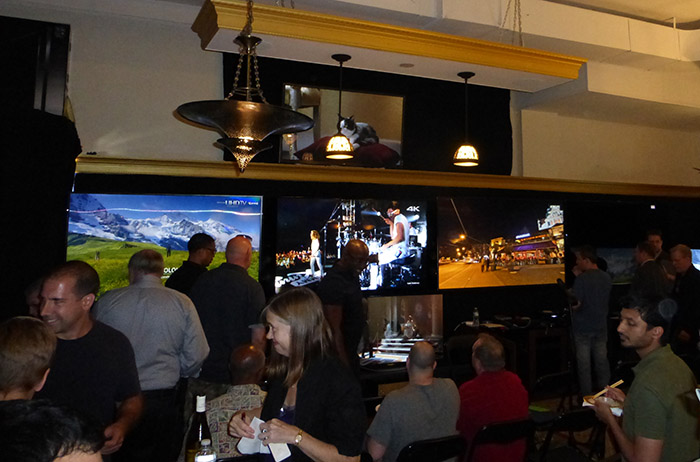
Speaking of the plasma, this was actually last year's winner of the Shooutout, the Samsung 64-inch PN64F8500. It remained eligible this year as Samsung has kept the set current in the model line for 2014. And it might be surprising to some (except those who were at the event), that this little plasma performed extremely well in the ranking. Also surprising to some may be that this was the second least expensive set in the Shootout at $4399 MSRP. In fact, its actual MAP (Minimum Advertised Price) of $3097.99 makes it the least expensive set in the entire shooting match. As for which TV won, that shall be revealed soon...
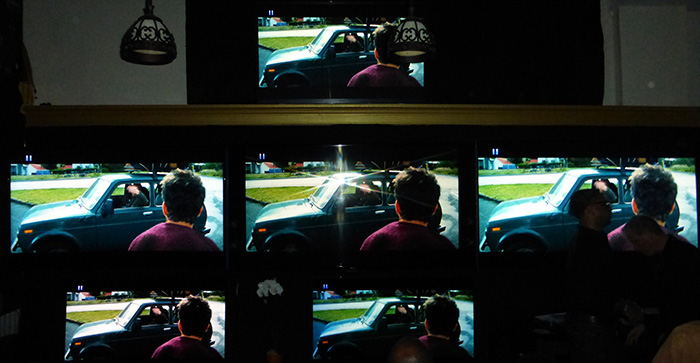
Complete List of Models from Value Electronics' TV Shooutout 2014:
| Brand | Model | Panel Technology | Screen Size (Diagonal) | UHD or HD TV? | Form Factor | Lighting | Resolution | Selling Price |
| LG | 55EC9300 | OLED | 55" | HDTV | Curved | n/a | 1920x1080 | $3,499.99 |
| Samsung | KN55S9 | OLED | 55" | HDTV | Curved | n/a | 1920x1080 | $8,999.99 |
| Samsung | PN64F8500 | Plasma | 64" | HDTV | Flat | n/a | 1920x1080 | $3,097.99 |
| Samsung | UN78HU9000 | LCD | 78" | UHD TV | Curved | Edge-lit LED | 3820x2160 | $7,997.99 |
| Sony | XBR-79X900B | LCD | 79" | UHD TV | Flat | Edge-lit LED | 3820x2160 | $7,498.00 |
| Samsung | UN85HU8550 | LCD | 85" | UHD TV | Flat | Backlit LED | 3820x2160 | $9,997.99 |
| Sony | XBR-85X950B | LCD | 85" | UHD TV | Flat | Backlit LED | 3820x2160 | $24,998.00 |
| Samsung | UN105S9W | LCD | 105" | UHD TV | Curved | Backlit LED | 5120x2160 | $119,999.99 |
As usual, the event kicked off with a welcome from Robert Zohn, who then turned it over to two industry luminaries: Joe Kane (co-founder of the Imaging Science Foundation and overall video maven) and Dr. Larry Weber, considered to be the father of plasma TV.
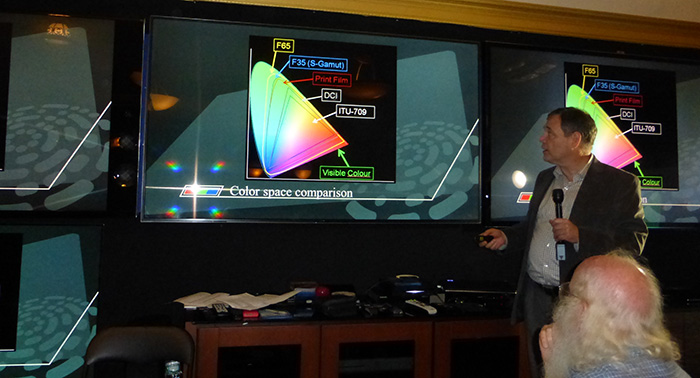
Mr. Kane espoused the importance of building an expandable spec for Ulra High Definition TV that considers not just screen resolution (number of pixels) but other picture quality attributes such as high dynamic range and expanded color gamuts. Joe envisions a world where the UHD spec is comprehensive enough that content producers can create incredible content now which would look good on current UHD sets but would look better and better as display makers catch up with the content producers in imaging capabilities. Just as Blu-ray Disc players currently include the ability to output a simple stereo mix of a movie's advanced 7.1 channel soundtrack, so the UHD format could be made to gracefully degrade.
With Mr. Kane's plan, source components (or internal apps/media players on the display) would have an "output transform" function that would identify the capabilities of the display device during the initial HDMI handshake and send the appropriate source format to the display. If the source has 32-bit color but the display is only an 8-bit panel then the source would send out an 8-bit "downmix" at playback time for best results on that display. But as displays become more powerful and advanced, the output might be stepped up to 12, 24 or even 32 bits (all without any changes required to the content). This allows content creators to create content today that will continue to improve over time as the display technology is enhanced.
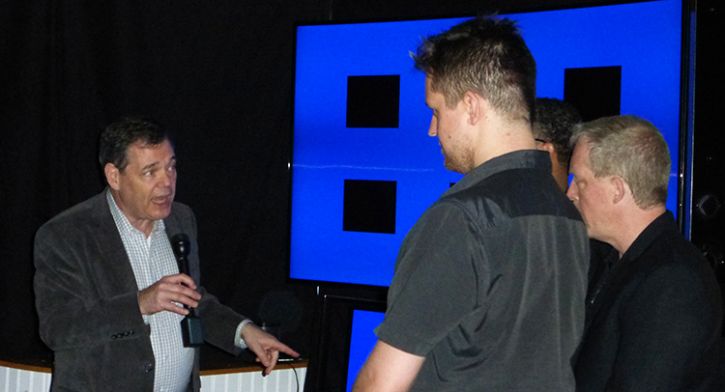
Dr. Weber spoke mostly about the differences between self-emissive technologies (OLED and plasma) vs. backlit displays (LED/LCD). While LCD TVs can look pretty good, particularly with the application of local dimming LED backlights, self-emissive technologies have inherent advantages in reproducing black levels and high contrast. A high-end LED/LCD TV might have over 200 local zones of backlight that can be dimmed, brightened or turned off entirely in order to enhance contrast and create deep inky blacks. But a 1080p plasma or OLED TV has over 2,000,000 zones: each pixel can be individually brightened, dimmed or turned off entirely.
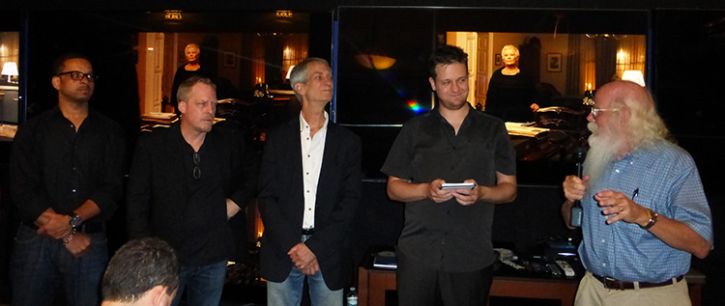
This advantage made itself clear during the actual head-to-head evaluation portion of the Shootout. Some LED/LCD sets, like the Sony 85-inch behemoth, created excellent black levels on content that was primarly dark with bright areas (like a lamplight on a dark street). The contrast between dark backgrounds and bright images in the foreground was excellent, making the image appear almost three-dimensional. However, one could notice a bit of "blooming" around the edges of bright objects. This is caused by the fact that the lighting zone behind the bright object was larger than the object itself so you get a certain amount of light bleed around the edges. The same object on the plasma and OLED sets had clear edges and no light bleeding into the background.
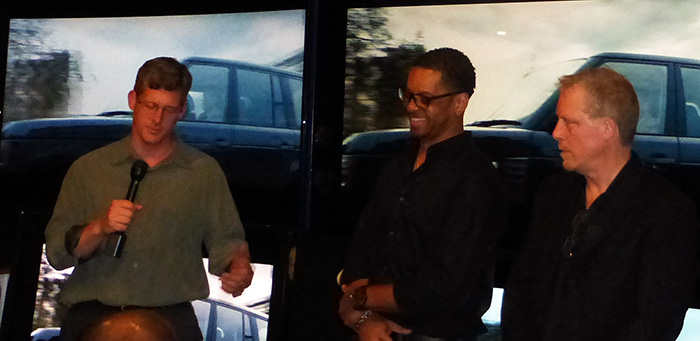
The encouraging part of the Shootout is just how well the new OLED sets held up to the much more mature technologies: both plasma and LED/LCD. The OLED sets created deeper black levels and better contrast than even the Samsung plasma set. There were some minor color decoding and motion resolution artifacts on the LG OLED TV, and some dithering noise and off-axis viewing issues on the Samsung OLED set which brought the scores down slightly, but considering how new the technology is, the sets scored extremely well.
Even more encouraging was the price: LG's first 55-inch OLED went on sale last year for just under $11,000 when it was first introduced. This new second generation model sports a street price of just $3,500. And while that's no chump change, it does portend well for affordable OLED TVs in the not-so-distant future.
And the Winner Is...
As has sometimes occured in past shootouts (notably, at the 2013 shootout), there was a bit of a split decision on the winner. This year, the calibrators scored the Samsung KN55S9C OLED TV highest overall, but the audience favored the LG 55EC9300 OLED TV in contrast ratio, black level and overall picture quality. If you simply add up the scores for all of the TVs involved and take the average, then the Samsung PN64F8500 plasma TV actually took home the prize for highest overall score for the second year in a row. So not only were the LG OLED and Samsung plasma sets the least expensive TVs in the shootout (by far), but they earned the highest overall scores.
On Value Electronics' Facebook page, Robert has declared the LG 55EC9300 OLED TV the winner of the contest, due to its superior scores in black level, contrast and overall picture quality as rated by the audience. As Robert has said (and most journalists and reviewers would agree), contrast ratio -- the ability to display bright colors against an inky black background -- is the single most important element in creating a lifelike and almost three-dimensional image. But we do hope he acknowledges the Samsung F8500 plasma for winning the overall (unweighted) popular vote for the second year in a row.
UPDATE: Robert sent out an updated message this afternoon to attendees of the event declaring a tie between the LG OLED and the Samsung F8500 plasma. Considering how close the scores were, we think this is pretty fair handling of the situation.
The complete (revised) scorecard is included below.
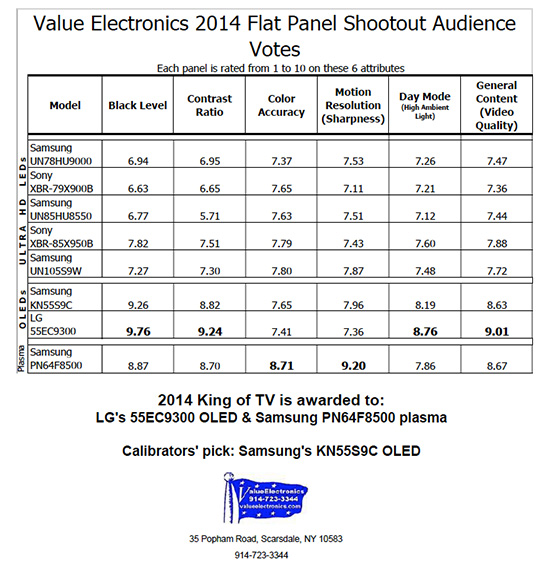
Special thanks to Robert Zohn for putting on another great show. He mentioned there may be a follow-up later this year with some models that weren't available in time for this year's shootout. But if not. we'll see you next year.
More Information: